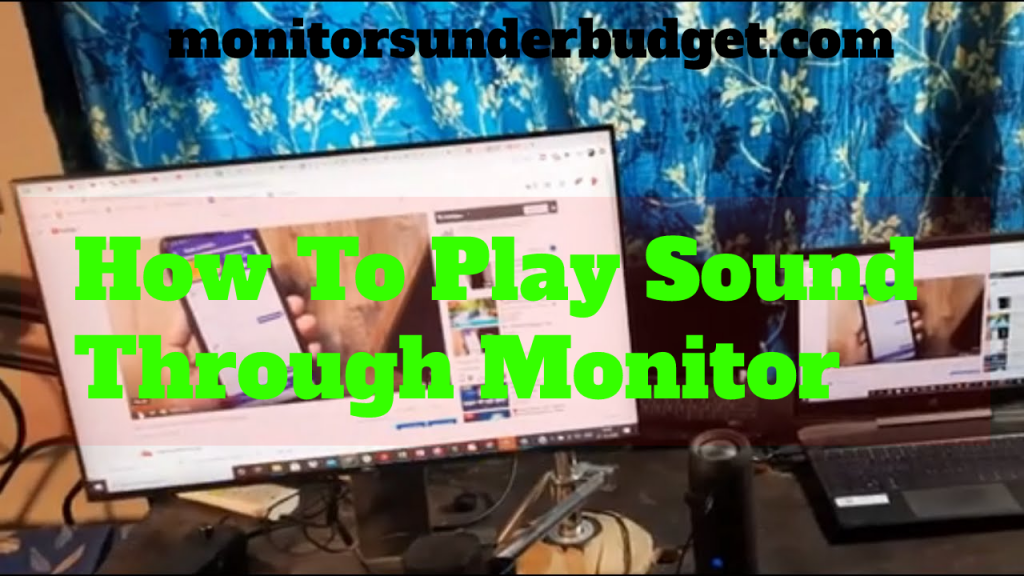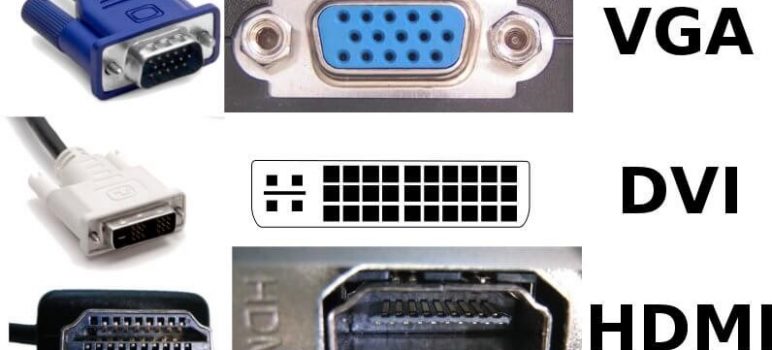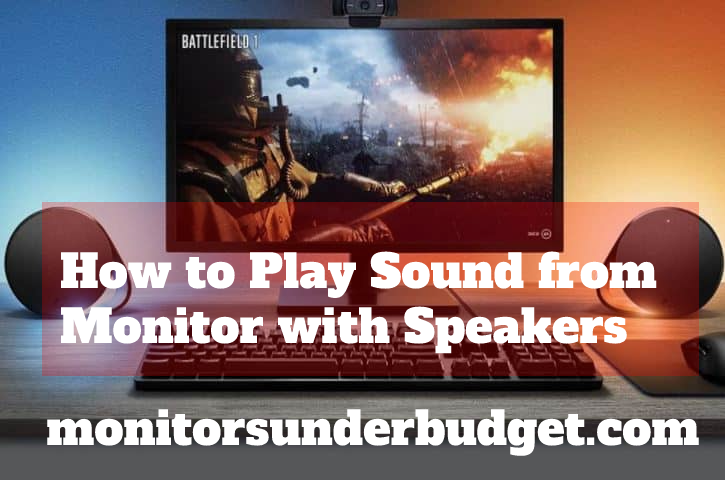Are you interested in learning how to play sound through monitor? So, if you’re looking for ideal answers to this problem, you came to the right place. In this post, we’ll show you how to get sound from your monitor in the most efficient way.
There are different kinds of monitors: those with built-in speakers and without built-in speakers, depending on how they are linked to speakers.
Built-in speakers allow users to listen to music without the need for additional speakers. Only a few monitor types include built-in speakers. There are multiple choices if a monitor does not come with built-in speakers.
There is typically no need for a separate audio connection if you connect your computer to your monitor through HDMI or DisplayPort. You’ll need a 3.5-millimeter audio cable if you connect through DVI or VGA.

1. Different Ways How To Play Sound Through Monitor:
The guide will explain to you how to play sound through a monitor. If your monitor includes built-in speakers, you’ll want to double-check the port connection.

Is it equipped with,
Connecting Displayport and HDMI devices is simple. With VGA/DVI, however, an additional Audio 3.5mm wire is required.
1.1. How to Play Sound through Monitor with Audio Line On VGA/DVI?
You may get a sound output without connecting anything to your display except the video signal. If you have a PS4 or XBOX and want to know without a speaker, how to get sound from Xbox One to monitor.
For sound, most game consoles such as the PS4 and XBOX have an optical audio connection interface. So, if you can make use of it, having an immersive sound output will be an excellent option.

If you have a 3.5 aux cable, you can connect it to your console or any other device to see if it works. This method will work in many cases, and you will never have to connect anything to your monitor.
Steps on how to connect Speakers to monitor with audio Jack:
1.2. How to Play Sound through Monitor with DisplayPort?
Both audio and visual signals are carried through the DisplayPort interface. They also transport USB drives and a variety of other types of data. It was created to overcome the drawbacks of DVI, VGA, and FDP-Link. This is the best way to get sound from a monitor without speakers.
To enable audio transmission through DisplayPort, you’ll need three things: a visual output device such as a laptop or computer, a sink device that supports audio playback, and a dual-cable connector.
The DisplayPort interface may carry both audio and visual signals. They can also carry USB discs and many other data kinds. It was designed to address the shortcomings of DVI, VGA, and FDP-Link.
Three elements are required to allow audio transmission through DisplayPort: a visual output device, such as a laptop or computer, an audio sink device, and a dual-cable connection.
Steps to connect the monitor with DisplayPort:
- To start, connect the monitor and audio source with a DisplayPort cable.
- Select Sound from the control panel and set the playing device to Display Audio.
- Before checking the sound, make sure it isn’t muted or turned down too low.
- Click Configure, then Test to test the DisplayPort.
- If asked, restart your computer. Otherwise, click the OK button to finish.
1.3. How to Get Sound on second Monitor HDMI?
HDMI Audio extractor that connects the audio source and the HDMI audio extractor. This output, however, may only be received if you have speakers that accept the 3.5 mm connector.

Because HDMI ports can handle both audio and visual data, you may use an HDMI splitter to connect to both the primary device and the speakers independently. This setup will be ideal for gaming or streaming.
2. How to Play Sound from a Monitor with Speakers?
Some monitors include inbuilt monitors that generate average sound that is suitable for use in a business setting. You don’t need to connect an external sound source to the display in these circumstances.
A headphone/Audio in port may be found on the back of your monitor to see whether it has built-in speakers. Built-in speakers have the advantage of saving you money, desk space, and time in the setup process.

You will also need to follow the steps outlined below to enable your built-in speakers.
Conclusion:
This was all to explain, “How to play sound through the monitor?” We hope you enjoyed reading this article. We hope you won’t create a suitable sound output without your monitor’s built-in speakers.
All of these approaches have been thoroughly tested and tried by a large number of people. As a consequence, you can rest assured that you will obtain the best outcomes from them.
![How To Play Sound Through Monitor [Quick Guide 2022]](https://monitorsunderbudget.com/wp-content/uploads/2021/10/maxresdefault-58.png)